This article is extracted from the book Freemasonry – Adding More Light to the World by Fu Ceyi. It is now updated and includes materials previously omitted. Copyright exerted.
There are a good number of books written about the great Roberto Calvi – Vatican fraud and scandal in the late 1970s and early 1980s. Even today it makes interesting reading. After the recent successes of The Da Vinci Code and Jack the Ripper - From Hell, I would not be surprised if Hollywood's version of the Roberto Calvi's case appears in the cinemas. Martin Short apparently jumped on the loaded wagon created after Stephen Knight had succeeded in generating a great deal of public interest with his sensational books on Freemasonry.
Stephen Knight 1976.
After Knight’s untimely death, Short followed up with his own more fanciful sequel Inside The Brotherhood to Knight’s The Brotherhood to further his writing career. Knight’s most damning accusation against freemasons was his theory on the death of Roberto Calvi in London and its connection with the P2 lodge of the Italian Grand Orient. Short expanded further on Knight’s theory.
The basis for pointing the finger at Freemasonry was because P2 also known as Propaganda Due was originally formed by the Italian Grand Orient as a lodge of research.
Lucio Gelli, a convicted fraudster and well known fascist took over the P2 Lodge in 1975 as Grand Master.
Lucio Gelli a convicted fraudster and well known fascist took over the lodge as the Venerable Grand Master in 1975. A year later, the Grand Orient of Italy disavowed and suspended P2 and it ceased to be an official Masonic organization. Gelli then used the illegal P2 for his own purposes and those of his associates turning it into a secret network of cells of powerful politicians, bankers, and publishers throughout Italy without the knowledge and consent of the Italian Grand Orient. After P2 was thrown out of official Italian Freemasonry, Gelli brought in Michele Sindona, the leading financial consultant to the Vatican. Sindona then brought in Roberto Calvi in 1977. Calvi was chairman of an important and exclusive private bank, the Banco Ambrosiano of Milan, which had both Gelli and the Vatican as important clients. The papal bank was also a major shareholder. Calvi brought in his most valued contact, the Instituto per lo Opere di Religione, the Institute for Religious Works (IOR).
The IOR belongs not to the Vatican city-state but to the pope alone. Archbishop Paul Marcinkus was in charge of IOR. After Calvi got involved with Gelli and Sindona, the Banco Ambrosiano helped to set up foreign shell companies including ten in Panama, which were controlled by the papal bank. Banco Ambrosiano then loaned these shell companies up to 1.3 billion dollars. When Italian banking officials grew suspicious, Calvi and the Archbishop Marcinkus exchanged letters to try and allay the suspicions of the Italian banking officials and other international banks that had given loans to companies in the Vatican stable. Marcinkus’s letters of comfort confirming that the foreign shell companies were under the control of the papal bank and Calvi’s replies proved to be of little value.
The IOR belongs not to the Vatican city-state but to the pope alone. Archbishop Paul Marcinkus was in charge of IOR. After Calvi got involved with Gelli and Sindona, the Banco Ambrosiano helped to set up foreign shell companies including ten in Panama, which were controlled by the papal bank. Banco Ambrosiano then loaned these shell companies up to 1.3 billion dollars. When Italian banking officials grew suspicious, Calvi and the Archbishop Marcinkus exchanged letters to try and allay the suspicions of the Italian banking officials and other international banks that had given loans to companies in the Vatican stable. Marcinkus’s letters of comfort confirming that the foreign shell companies were under the control of the papal bank and Calvi’s replies proved to be of little value.
Finally, when the Bank of Italy officials closed in and informed Calvi in June 1982 of its intention to question him about the 1.3 billion dollars which had disappeared, he left immediately for London.[i] Calvi’s body was found hanging on the railings of Blackfriars Bridge in London with a noose around his neck on 19 June 1982. The story went round that he was found with some stones and straw, and enough drugs to kill himself in his pocket. At the first inquest, the coroner returned a verdict of suicide by hanging. Because of the stones, straw and drugs found in his pocket, many questions were raised in the press and TV in England and Italy ridiculing the suicide verdict. Questions such as, if he had wished to commit suicide, why did not he take an overdose of the drugs in the house he was staying instead of going all the way to Blackfriars Bridge and hanged himself there? And why was he carrying stones and straw in his pocket?
Roberto Calvi, Chairman of Banco Ambrosiano also known as God's Banker. He was found hanging on the railings of Blackfriars Bridge, London on 19th June 1982.
As a result of the public outcry, a second inquest was held in June 1983. The first verdict was set aside and a new verdict of death from causes unknown was recorded. The popular belief at that time was that he was kidnapped, taken out on a boat on the Thames and then murdered and his body was then heaved up from the boat with a rope around his neck and his body left hanging on the bridge. 1.3 billion dollars is a lot of money to be missing and unaccounted for. Calvi did not steal the money alone by himself. Those who suffered such losses or those who were in cahoots with him to steal the money would be more than upset at the scandal, for fear of being exposed. If he was murdered, it begs the question, who killed him? Here Knight and Shot speculated that because Gelli was one of the customers at Calvi’s bank, P2 and freemasons must have been involved.
As a result of the public outcry, a second inquest was held in June 1983. The first verdict was set aside and a new verdict of death from causes unknown was recorded. The popular belief at that time was that he was kidnapped, taken out on a boat on the Thames and then murdered and his body was then heaved up from the boat with a rope around his neck and his body left hanging on the bridge. 1.3 billion dollars is a lot of money to be missing and unaccounted for. Calvi did not steal the money alone by himself. Those who suffered such losses or those who were in cahoots with him to steal the money would be more than upset at the scandal, for fear of being exposed. If he was murdered, it begs the question, who killed him? Here Knight and Shot speculated that because Gelli was one of the customers at Calvi’s bank, P2 and freemasons must have been involved.
Calvi's Corpse.
To make a long story short, Short concluded that Calvi must have been murdered either by the Mafia or by Italian freemasons. He mentioned that the Mafia did not have any links in London, whereas in contrast, the two Italian freemasons named Florio Carboni and Sylvano Vittot who accompanied Calvi to London had and that Calvi had mentioned to a few friends that he had visited a Masonic lodge in London with an illustrious list of members including very wealthy businessman Peter de Savary and members of the royal family. Though he commented, “No evidence links any British masons with a plot to kill Calvi, but …”. It was slanted to leave readers guessing. A mischievous writer’s technique to guide readers to his intended conclusion which is to suggest a possible sinister connection and imply that the highest ranking English freemasons could have assisted the P2 Italian ex rogue freemasons in murdering Calvi and lynching him at Blackfriars Bridge. P2 members were then known to perform their ceremonies dressed up in black cassocks like Dominican friars.
Blackfriar's Bridge London
The bridge is within the jurisdiction of the City of London Police force, who are in Short’s words, “steeped in Freemasonry” and within sight of the Temple Gardens which were once the home of the Knights Templar. Without the Masonic connection his story would be the same old stale one. Calvi could have boasted about his meeting with a millionaire and members of the royal family or he could have invented that story. There was no other independent corroborative evidence. Calvi’s death and the subsequent investigation triggered the collapse of Bank Ambrosiano. The papal bank was said to have lost over 450 million dollars in this fiasco. The incredible shock and inexplicable thing was that the papal bank agreed to pay and paid over a sum of 244 million dollars while denying any guilt or any material involvement in the great fraud. This raised more questions than provided answers. Early in 1987, the Italian government indicted Archbishop Marcinkus for fraudulent bankruptcy. Pope John Paul II refused to produce Marcinkus to answer the charges, and he could not be extradited as the Vatican is a state of its own within Italy. The pope himself declined to answer any questions and refused to provide any documentation with regards to the involvement of the papal bank or of Vatican officials.
The bridge is within the jurisdiction of the City of London Police force, who are in Short’s words, “steeped in Freemasonry” and within sight of the Temple Gardens which were once the home of the Knights Templar. Without the Masonic connection his story would be the same old stale one. Calvi could have boasted about his meeting with a millionaire and members of the royal family or he could have invented that story. There was no other independent corroborative evidence. Calvi’s death and the subsequent investigation triggered the collapse of Bank Ambrosiano. The papal bank was said to have lost over 450 million dollars in this fiasco. The incredible shock and inexplicable thing was that the papal bank agreed to pay and paid over a sum of 244 million dollars while denying any guilt or any material involvement in the great fraud. This raised more questions than provided answers. Early in 1987, the Italian government indicted Archbishop Marcinkus for fraudulent bankruptcy. Pope John Paul II refused to produce Marcinkus to answer the charges, and he could not be extradited as the Vatican is a state of its own within Italy. The pope himself declined to answer any questions and refused to provide any documentation with regards to the involvement of the papal bank or of Vatican officials.
American Archbisop Paul Macinkus, Head of Vatican Bank.
This scandal and great fraud involving Roberto Calvi of Banco Ambrosiano and the Instituto per lo Opere di Religione, the Institute for Religious Works (IOR), the Vatican Bank spans the reigns of 3 popes. It started with Giovanni Battita Montini as Pope Paul VI (elected 21 June 1963 died 6 August 1978), Albino Luciani as Pope John Paul I (elected 26 August 1978 died 28 September 1978) and Karol Wojtyla as the late Pope John Paul II who was elected on 16 October 1978. Pope John Paul I ruled for only 33 days and died unexpectedly; there were some controversies in the circumstances leading to his death, the manner he died and the actions and non action of some of the key Vatican decision making officials after his death. Apparently a few within the Vatican who had worked closely with Pope John Paul I could not accept his sudden death as natural and leaked to the press and others of the suspicious circumstances of his death and also the thoughts, intention and radical changes Pope John Paul I was about to introduce within the Vatican just before his death.
This scandal and great fraud involving Roberto Calvi of Banco Ambrosiano and the Instituto per lo Opere di Religione, the Institute for Religious Works (IOR), the Vatican Bank spans the reigns of 3 popes. It started with Giovanni Battita Montini as Pope Paul VI (elected 21 June 1963 died 6 August 1978), Albino Luciani as Pope John Paul I (elected 26 August 1978 died 28 September 1978) and Karol Wojtyla as the late Pope John Paul II who was elected on 16 October 1978. Pope John Paul I ruled for only 33 days and died unexpectedly; there were some controversies in the circumstances leading to his death, the manner he died and the actions and non action of some of the key Vatican decision making officials after his death. Apparently a few within the Vatican who had worked closely with Pope John Paul I could not accept his sudden death as natural and leaked to the press and others of the suspicious circumstances of his death and also the thoughts, intention and radical changes Pope John Paul I was about to introduce within the Vatican just before his death.
These led some authors and journalists to claim that he was murdered by poison. Despite such suspicious circumstances of his death and the demands of the press and TV stations for an autopsy, no autopsy was performed and he was embalmed within 12 hours before the arrival of other Cardinals. He was a fierce opponent of corruption and upon his ascension to the papacy embarked on a radical review of the workings within the Vatican, the Church’s position on birth control and to his credit and courage an investigation into the Vatican Bank, more especially into the methods used by its President, Bishop Paul Marcinkus and his criminal associates in their business dealings with Banco Ambrosiano and members of the illegal P2. David Yallop, author of In God's Name claimed he was asked by certain residents in the Vatican City to investigate the pope’s death because they were disturbed by a cover-up of the true circumstances surrounding the discovery of Albino Luciani’s (Pope John Paul I) body.
After 3 years of intensive research he was convinced that Pope John Paul I was murdered. His research resulted in the publication of In God’s Name in 1984 which revealed a web of criminal conspiracy spanning three continents involving Roberto Calvi, chairman of Banco Ambrosiano, Licio Gelli, convicted fraudster, former Nazi and well known fascist, Sicilian criminal banker, illegal drug manufacturer and wholesaler, Michelle Sindona and Bishop Paul Marcinkus, head of the I.O.R. and the Vatican bank. His list of suspects besides the above included Cardinal Villot, secretary of state in the Vatican and Cardinal Cody of Chicago, head of the richest arch-diocese in the world. Cardinal Cody, Cardinal Villot and Bishop Marcinkus were to be removed from their posts the following day by Pope John Paul I when he unexpectedly died in the late evening or early morning of September 29 1978. Gelli, Calvi and Sindona stood to lose the most if Pope John Paul I removed their man Bishop Marcinkus who was also a board member of Banco Ambrosiano from his post and stop the Vatican Bank from its corrupt and fraudulent involvement with Banco Ambrosiano.
Pope John Paul I before he was elected pope had an unpleasant experience involving Bishop Marcinkus and Calvi when he was then known as Cardinal Albino Luciani, Patriarch of Venice. In 1972 Bishop Marcinkus sold Banca Cattolica del Veneto, one of the wealthiest in the country to Roberto Calvi of Banco Ambrosiano without any reference to the Patriarch or any person in the Veneto region. Banca Cattolica known as “the priests’ bank” was founded for the diocese and for many years contributed to the vital work for that section of society described by Luciani as the “other Venice” comprising ex-prisoners, alcoholics, poor and abandoned people, tramps, women who could no longer work as prostitutes and the handicapped.
After 3 years of intensive research he was convinced that Pope John Paul I was murdered. His research resulted in the publication of In God’s Name in 1984 which revealed a web of criminal conspiracy spanning three continents involving Roberto Calvi, chairman of Banco Ambrosiano, Licio Gelli, convicted fraudster, former Nazi and well known fascist, Sicilian criminal banker, illegal drug manufacturer and wholesaler, Michelle Sindona and Bishop Paul Marcinkus, head of the I.O.R. and the Vatican bank. His list of suspects besides the above included Cardinal Villot, secretary of state in the Vatican and Cardinal Cody of Chicago, head of the richest arch-diocese in the world. Cardinal Cody, Cardinal Villot and Bishop Marcinkus were to be removed from their posts the following day by Pope John Paul I when he unexpectedly died in the late evening or early morning of September 29 1978. Gelli, Calvi and Sindona stood to lose the most if Pope John Paul I removed their man Bishop Marcinkus who was also a board member of Banco Ambrosiano from his post and stop the Vatican Bank from its corrupt and fraudulent involvement with Banco Ambrosiano.
Pope John Paul I before he was elected pope had an unpleasant experience involving Bishop Marcinkus and Calvi when he was then known as Cardinal Albino Luciani, Patriarch of Venice. In 1972 Bishop Marcinkus sold Banca Cattolica del Veneto, one of the wealthiest in the country to Roberto Calvi of Banco Ambrosiano without any reference to the Patriarch or any person in the Veneto region. Banca Cattolica known as “the priests’ bank” was founded for the diocese and for many years contributed to the vital work for that section of society described by Luciani as the “other Venice” comprising ex-prisoners, alcoholics, poor and abandoned people, tramps, women who could no longer work as prostitutes and the handicapped.
The Vatican Bank had since 1946 held a majority share in Banca Cattolica and the various dioceses in the Veneto region having small shareholdings amounting to less than 5 percent. By 1972 the Vatican Bank alone had owned 51 percent. Though the Vatican Bank had a clear majority, there had always been an understanding between Venice and the Vatican that the vast Vatican shareholding was an insurance against any potential takeover bid by a third party. For many years in the past the bank had always loaned money to the clergy at low interest rates for their charitable work but now they were without notice told after the takeover by Calvi that they will have to pay the full interest rate no matter how worthy their work was. This change in management and policy change really upset the clergy. To make the long story short, I would like to quote a brief summary of the disquiet expressed by the clergy as researched, interviewed and summarized by Yallop:
The Bishops of the region descended en masse on the Patriarch’s office in St. Mark’s Square. He (Luciani) listened quietly as they outlined what had happened. They told him how in the past when they had wished to raise capital they had turned to the Vatican Bank who had loaned money, holding their shares in Banca Cattolica as security. Now these shares, along with a large stake acquired by the Vatican Bank, had been sold at a huge profit to Calvi.
The enraged bishops pointed out to Luciani that had they been given the opportunity they could have raised the necessary money to repay the Vatican Bank and thereby re-acquire their shares. What was more pertinent in their eyes was the appalling breach of trust perpetrated by Marcinkus, acting on behalf of the Vatican that claimed to be the moral leader in the world; he had at the very least displayed a total lack of morals. The fact that he had kept the entire profit on the transaction for the Vatican Bank may have also caused some of their anger.
The bishops urged Luciani to go directly to Rome. They wanted Papal intervention. If that intervention took the form of firing Paul Marcinkus it was clear that in the Veneto region at least, not many tears would be shed. Luciani calmly weighed the problem. Ever a prudent man, he considered he needed more facts before laying such a problem before Pope John Paul I.
Luciani began to probe quietly. He learned a great deal about Roberto Calvi and also about a man named Michele Sindona. What he learned appalled him. It also alerted him to the dangers of complaining directly to the Pope. Based on information he had obtained it was clear that Calvi and Sindona were highly favored sons of the Church and were held in high esteem by Paul VI. The man Albino Luciani turned to was one who had become a close friend over the previous five years, Under-Secretary of State Monsignor Giovanni Benelli.” [ii]
The Bishops of the region descended en masse on the Patriarch’s office in St. Mark’s Square. He (Luciani) listened quietly as they outlined what had happened. They told him how in the past when they had wished to raise capital they had turned to the Vatican Bank who had loaned money, holding their shares in Banca Cattolica as security. Now these shares, along with a large stake acquired by the Vatican Bank, had been sold at a huge profit to Calvi.
The enraged bishops pointed out to Luciani that had they been given the opportunity they could have raised the necessary money to repay the Vatican Bank and thereby re-acquire their shares. What was more pertinent in their eyes was the appalling breach of trust perpetrated by Marcinkus, acting on behalf of the Vatican that claimed to be the moral leader in the world; he had at the very least displayed a total lack of morals. The fact that he had kept the entire profit on the transaction for the Vatican Bank may have also caused some of their anger.
The bishops urged Luciani to go directly to Rome. They wanted Papal intervention. If that intervention took the form of firing Paul Marcinkus it was clear that in the Veneto region at least, not many tears would be shed. Luciani calmly weighed the problem. Ever a prudent man, he considered he needed more facts before laying such a problem before Pope John Paul I.
Luciani began to probe quietly. He learned a great deal about Roberto Calvi and also about a man named Michele Sindona. What he learned appalled him. It also alerted him to the dangers of complaining directly to the Pope. Based on information he had obtained it was clear that Calvi and Sindona were highly favored sons of the Church and were held in high esteem by Paul VI. The man Albino Luciani turned to was one who had become a close friend over the previous five years, Under-Secretary of State Monsignor Giovanni Benelli.” [ii]
Pope Paul VI. He embraced Michele Sindona publicly as a favoured son of the church and appointed him "Financial Advisor" to the Vatican. Sindona subsequently became popularly known as "God's Banker"
Pope Paul VI first came to know Sindona when he was Archbishop Montini of Milan. Sindona was then a banker in Milan. When Montini was elected as Pope Paul VI on 21 June 1963, the Vatican Bank also gained a new lay financial advisor in the person of Michele Sindona.[iii] Luciani disturbed by the news and information given him by his bishops met up with Benelli and was told that Calvi had indeed became the majority shareholder in Banca Cattolica and that Marcinkus had sold him 37 per cent of the bank’s shares belonging to the Vatican Bank on March 30th. Luciani was shocked when Benelli told him that “Calvi had paid 27 billion lire (approximately $45 million) to Marcinkus; how the sale was the result of a scheme hatched jointly by Calvi, Sindona and Marcinkus, of a company called Pacchetti which had been purchased by Calvi from Sindona after its price had been grossly and criminally inflated on the Milan stock exchange, of how Marcinkus had assisted Calvi in masking the nature of this and other operations from the eyes of Bank of Italy officials by putting the Vatican bank facilities at the disposal of Calvi and Sindona.” [iv]
The bewildered Luciani asked “What does all this mean?” The answer from Benelli was “Tax evasion, illegal movement of shares. I also believe that Marcinkus sold the shares in your Venice bank at a deliberately low price and Calvi paid the balance, a separate 31 billion lire deal on Credito Varesino.” Albino Luciani returned to Venice and sadly informed his bishops that Banca Cattolica was forever lost to the diocese. Most of the bishops including Luciani sold their remaining shares in Bank Cattolica and closed their accounts in the bank to express their disapproval of the Vatican’s conduct. Luciani moved the official diocesan accounts to the small Banco San Marco and confided to one of his colleague. “Calvi’s money is tainted. The man is tainted. After what I heard of Roberto Calvi I would not leave the accounts in his bank if the loans they granted to the diocese were totally free of interest.” [v]
This incident must have left a lasting impression on Luciani and when elected Pope he was determined to rid the Vatican Bank of Marcinkus and free it from all the “tainted” transactions. He was a pope who did not wish to be pope and being a peaceful humble man without ambition; he was unaccustomed to governing and ill equipped to deal with the very deadly combustible combination of Gelli, Sindona, Calvi, Marcinkus and other ambitious Vatican officials; nor was he given the chance to right what was to him obviously very wrong.
The association between the Vatican Bank through Bishop Marcinkus and the Gelli, Sindona and Calvi trinity began with the awareness and approval of Pope Paul VI who personally received Gelli in the Vatican.[vi] An incident on 25 April 1973 should have served as a warning to Pope Paul VI and Bishop Marcinkus as to what is to be expected from associating with men like Gelli, Sindona and Calvi was ignored. On that day, William Lynch, Chief of the Organized Crime and Racketeering section of the U S department of Justice accompanied by William Aronwald, Assistant Chief of the Strike Force in the southern district of New York and two other members of the FBI visited Cardinal Benelli office at the Secretariat of State in Vatican City and informed him and three of his staff, Monsignors Edward Martinez, Carl Rauber and Justin Rigali about an American mafia plot involving Marcinkus and Sindona to use 950 million dollars worth of counterfeit U S bonds to buy Bastogi, a giant Italian company headquartered in Milan with wide interests including property, mining and chemicals.[vii] Lynch informed Benelli and his staff that much of the evidence, from separate sources strongly suggested that someone with financial authority in the Vatican had ordered the fake bonds.
This incident must have left a lasting impression on Luciani and when elected Pope he was determined to rid the Vatican Bank of Marcinkus and free it from all the “tainted” transactions. He was a pope who did not wish to be pope and being a peaceful humble man without ambition; he was unaccustomed to governing and ill equipped to deal with the very deadly combustible combination of Gelli, Sindona, Calvi, Marcinkus and other ambitious Vatican officials; nor was he given the chance to right what was to him obviously very wrong.
The association between the Vatican Bank through Bishop Marcinkus and the Gelli, Sindona and Calvi trinity began with the awareness and approval of Pope Paul VI who personally received Gelli in the Vatican.[vi] An incident on 25 April 1973 should have served as a warning to Pope Paul VI and Bishop Marcinkus as to what is to be expected from associating with men like Gelli, Sindona and Calvi was ignored. On that day, William Lynch, Chief of the Organized Crime and Racketeering section of the U S department of Justice accompanied by William Aronwald, Assistant Chief of the Strike Force in the southern district of New York and two other members of the FBI visited Cardinal Benelli office at the Secretariat of State in Vatican City and informed him and three of his staff, Monsignors Edward Martinez, Carl Rauber and Justin Rigali about an American mafia plot involving Marcinkus and Sindona to use 950 million dollars worth of counterfeit U S bonds to buy Bastogi, a giant Italian company headquartered in Milan with wide interests including property, mining and chemicals.[vii] Lynch informed Benelli and his staff that much of the evidence, from separate sources strongly suggested that someone with financial authority in the Vatican had ordered the fake bonds.
The Americans were in the Vatican because they had arrested a number of conspirators in the U S including Mario Foligni and Leopold Ledl. Foligni was the Vatican contact man and had a signed blessing from Pope Paul VI.[viii] The American mafia was impressed with Foligni’s connection with the Vatican and when one of his contacts Austrian Leopold Ledl produced a letter from the Vatican under the letter-heading “Sacra Congregazione Dei Religiosi” confirming their offer to “buy the complete stock of the merchandise up to the sum of 950 million dollars”, the deal was activated. The Vatican deal put together by Ledl was that the 950 million dollars worth of counterfeit bonds was to be purchased at 635 million dollars. “Commission” of 150 million dollars would be paid back by the gang to the Vatican, leaving the mafia with 485 million dollars and the Vatican with counterfeit bonds that had a face value of 950 million dollars to be used by Marcinkus on behalf of the Vatican bank and Michele Sindona to buy Bastogi.[ix]
Under interrogation, Foligni told the American law enforcers that Marcinkus had requested a trial run deposit of 1.5 million dollars worth of the fake bonds be made at Handelsbank in Zurich to test its acceptance. A second trial run of 2.5 million dollars worth was made at the Banco di Roma in September 1971. On both occasions the fake bonds passed the banks scrutiny, a testimony to the counterfeiting skills of the mafia. Unfortunately for the mafia conspirators both banks subsequently sent samples of the fake bonds to New York for scrutiny and The Bankers Association in New York confirmed them as fakes.[x]
Under interrogation, Foligni told the American law enforcers that Marcinkus had requested a trial run deposit of 1.5 million dollars worth of the fake bonds be made at Handelsbank in Zurich to test its acceptance. A second trial run of 2.5 million dollars worth was made at the Banco di Roma in September 1971. On both occasions the fake bonds passed the banks scrutiny, a testimony to the counterfeiting skills of the mafia. Unfortunately for the mafia conspirators both banks subsequently sent samples of the fake bonds to New York for scrutiny and The Bankers Association in New York confirmed them as fakes.[x]
Foligni also revealed to the Americans that with Sindona’s help, the Bishop had several secret numbered bank accounts in the Bahamas and that he had informed the Vatican Secretariat of State of the two trial deposits he had made in Switzerland and Rome. Assisted by Benelli’s office, the Americans eventually met up with Marcinkus. During the long interrogation, Marcinkus admitted that “Michele (Sindona) and I are very good friends” but denied that he was involved in the scam. According to the Americans the matter was not pursued further due to the lack of convincing evidence. Most of those involved in the billion dollar swindle were eventually found guilty. Richard Hamer, author of The Vatican Connections later alleged that the Americans were themselves part of a giant cover up and that they were merely going through the motions of an enquiry.[xi]
The conduct of Marcinkus and the questionable activities of the Vatican Bank must have attracted much adverse attention in Italy at that time. Five days after Luciani was elected as Pope on 31st August, 1978, the highly respected economic periodical, Il Mondo, published a long open letter entitled Your Holiness, Is It Right? to Pope John Paul I urging him to impose “order and morality” on the Vatican bank’s financial dealings. Attached to the open letter was a long analysis entitled The Wealth of Peter. Among other questions Il Mondo asked the Pope:
Is it right for the Vatican to operate in markets like a speculator? Is it right for the Vatican to have a Bank whose operations help the illegal transfer of capital from Italy to other countries? Is it right for that Bank to assist Italians in evading tax? [xii]
Its financial editor Paolo Panerai attacked Luigi Mennini and Paul Marcinkus of the Vatican Bank and questioned its relationships with Michele Sindona and associates. In his own words, “the most cynical financial dealers in the world, from Sindona to the bosses of the Continental Illinious Bank in Chicago (through which, as Your Holiness’s advisors can tell you, all of the Church’s investments in the United States are handled)”.
Panerai asked:
Why does the Church tolerate investments in companies, national and multi-national, whose only aim is profit; companies which, when necessary, are ready to violate and trample upon human rights of millions of the poor, especially in that Third World which is so close to Your Holiness’s heart? [xiii]
Referring to Paul Marcinkus, he commented:
He is, however, the only Bishop who is on the Board of a Lay Bank, which incidentally has a Branch in one of the great tax havens of the capitalistic world. We mean the Cisalpine Overseas Bank at Nassau in the Bahamas. Using tax heavens is permitted by earthly law, and no lay banker can be hauled into court for taking advantage of that situation (they all do); but perhaps it is not licit under God’s Law, which should mark every act of the Church. The Church preaches equality but it does not seem to us that the best way to ensure equality is by evading taxes, which constitute the means by which the Lay state tries to promote the same equality. [xiv]
Panerai may have recalled from Matthew 21: 12/13: “And Jesus went into the temple of God, and cast out all of them that sold and bought in the Temple, and overthrew the tables of the moneychangers, and the seats of them that sold doves, And said unto them, it is written, my house shall be called the house of prayer; but ye have made it a den of thieves.”
The conduct of Marcinkus and the questionable activities of the Vatican Bank must have attracted much adverse attention in Italy at that time. Five days after Luciani was elected as Pope on 31st August, 1978, the highly respected economic periodical, Il Mondo, published a long open letter entitled Your Holiness, Is It Right? to Pope John Paul I urging him to impose “order and morality” on the Vatican bank’s financial dealings. Attached to the open letter was a long analysis entitled The Wealth of Peter. Among other questions Il Mondo asked the Pope:
Is it right for the Vatican to operate in markets like a speculator? Is it right for the Vatican to have a Bank whose operations help the illegal transfer of capital from Italy to other countries? Is it right for that Bank to assist Italians in evading tax? [xii]
Its financial editor Paolo Panerai attacked Luigi Mennini and Paul Marcinkus of the Vatican Bank and questioned its relationships with Michele Sindona and associates. In his own words, “the most cynical financial dealers in the world, from Sindona to the bosses of the Continental Illinious Bank in Chicago (through which, as Your Holiness’s advisors can tell you, all of the Church’s investments in the United States are handled)”.
Panerai asked:
Why does the Church tolerate investments in companies, national and multi-national, whose only aim is profit; companies which, when necessary, are ready to violate and trample upon human rights of millions of the poor, especially in that Third World which is so close to Your Holiness’s heart? [xiii]
Referring to Paul Marcinkus, he commented:
He is, however, the only Bishop who is on the Board of a Lay Bank, which incidentally has a Branch in one of the great tax havens of the capitalistic world. We mean the Cisalpine Overseas Bank at Nassau in the Bahamas. Using tax heavens is permitted by earthly law, and no lay banker can be hauled into court for taking advantage of that situation (they all do); but perhaps it is not licit under God’s Law, which should mark every act of the Church. The Church preaches equality but it does not seem to us that the best way to ensure equality is by evading taxes, which constitute the means by which the Lay state tries to promote the same equality. [xiv]
Panerai may have recalled from Matthew 21: 12/13: “And Jesus went into the temple of God, and cast out all of them that sold and bought in the Temple, and overthrew the tables of the moneychangers, and the seats of them that sold doves, And said unto them, it is written, my house shall be called the house of prayer; but ye have made it a den of thieves.”
Jesus overthrew the tables of the money changers and said unto them "It is written, my house shall be called the house of prayer, but ye have made it a den of thieves"
It is also written in the Bible, “What will be done on earth will be done in heaven”. As above, so below. There is only God’s Law; applicable in heaven and earth and everywhere at the same time to everyone. If there are no tax havens above, there should be none on earth. The United Nations should ban all tax haven countries and secret numbered bank accounts on earth. They are set up to legalize and allow tainted and blood money to surface and be applied legitimately in the open market place free from scrutiny. Besides tax evasion, it is a place where all the mafia, drug dealers, professional killers, fascists, arms dealers, kidnappers, thieves and corrupt politicians and businessmen send their money for legalized laundering. Such money would then appear in the market place and be used to manipulate the economies and politics of governments all over the world.
It is also written in the Bible, “What will be done on earth will be done in heaven”. As above, so below. There is only God’s Law; applicable in heaven and earth and everywhere at the same time to everyone. If there are no tax havens above, there should be none on earth. The United Nations should ban all tax haven countries and secret numbered bank accounts on earth. They are set up to legalize and allow tainted and blood money to surface and be applied legitimately in the open market place free from scrutiny. Besides tax evasion, it is a place where all the mafia, drug dealers, professional killers, fascists, arms dealers, kidnappers, thieves and corrupt politicians and businessmen send their money for legalized laundering. Such money would then appear in the market place and be used to manipulate the economies and politics of governments all over the world.
The playing field will never ever be level and politicians are easily bought to serve their own selfish interest and perpetuate corruption and miseries for the majority of people in the world. It is only logical that politicians and governments that do not support the ban and allow companies registered in such tax havens to do business in the market place be suspected of having been bought or of having corrupt intentions. Citizens of the world should only support and elect politicians who support the ban. We have a right to be suspicious of their source of capital and intention if they chose to hide behind lawyers and accountants acting as nominees.
Il Mondo’s publication Your Holiness, Is It Right? and others at that time accusing the Vatican of amassing massive wealth served only to confirm Luciani’s own personal experience some years earlier when Marcinkus sold the Banca Cattolica of Venice without reference to him or any one else in the diocese to Calvi through a scheme hatched by Sindona, Calvi and Marcinkus. If Luciani had lived to implement his objectives, the history of the Church and may be the world would have been differently better.
Il Mondo’s publication Your Holiness, Is It Right? and others at that time accusing the Vatican of amassing massive wealth served only to confirm Luciani’s own personal experience some years earlier when Marcinkus sold the Banca Cattolica of Venice without reference to him or any one else in the diocese to Calvi through a scheme hatched by Sindona, Calvi and Marcinkus. If Luciani had lived to implement his objectives, the history of the Church and may be the world would have been differently better.
Pope John Paul I (Albino Luciani) was elected pope on 31st August 1978, he died on 29th September 1978 - he was pope for only 33 days, many believed he was murdered by poison.
After Luciani’s death, a compromise candidate Karol Wojtyla was elected as Pope John Paul II. Though he took the same name of Pope John Paul and was thoroughly briefed on Luciani’s intention to remove key Vatican officials and turn the Church’s direction towards accepting birth control and helping the poor and needy in the world; he turned the other way. In the words of David Yallop:
Whoever had murdered the Pope had not murdered in vain. Villot was again appointed Secretary of State. Cody remained in Control of Chicago. Marcinkus, aided by Mennini, de Strobel, and Monsignor de Bonis continued to control the Vatican Bank and continued to ensure that the criminal activities with Banco Ambrosiano flourished. Calvi and his illegal P2 masters Gelli and Ortolani were free to continue their massive thefts and frauds under the protection of the Vatican Bank. [xv]
Whoever had murdered the Pope had not murdered in vain. Villot was again appointed Secretary of State. Cody remained in Control of Chicago. Marcinkus, aided by Mennini, de Strobel, and Monsignor de Bonis continued to control the Vatican Bank and continued to ensure that the criminal activities with Banco Ambrosiano flourished. Calvi and his illegal P2 masters Gelli and Ortolani were free to continue their massive thefts and frauds under the protection of the Vatican Bank. [xv]
Pope John Paul II (Karol Wojtyla). He was the pope that elevated the Opus Die as a personal prelature thus ipso facto making him and future popes the head of Opus Die.
Marcinkus was later elevated to be an Archbishop. Calvi and his associates were engaged in the progressive, continuing theft of more than 1.3 billion dollars. He would have been exposed in 1978 if Luciani had lived. More than 400 million dollars loaned to the Panamanian companies under the control of the Vatican Bank was borrowed by Calvi from the world’s banks during the reign of Karol Wojtyla after the death of Luciani. Altogether a total of more than 900 million dollars were loaned to the following Panamanian companies as confirmed by the Vatican Bank as per their letter dated 1st September 1981. The letters were written on the letter head of the “Instito per le Opere di Religione”, Vatican City and addressed to Banco Ambrosiano Andino in Lima, Peru and Ambrosiano Group Banco Commercial in Nicaragua on the instructions of Bishop Paul Marcinkus and signed by Luigi Mennini and Pellegrino De Strobel. The letters confirmed as follows:
Gentlemen:
This is to confirm that we directly or indirectly control the following entities:
Marcinkus was later elevated to be an Archbishop. Calvi and his associates were engaged in the progressive, continuing theft of more than 1.3 billion dollars. He would have been exposed in 1978 if Luciani had lived. More than 400 million dollars loaned to the Panamanian companies under the control of the Vatican Bank was borrowed by Calvi from the world’s banks during the reign of Karol Wojtyla after the death of Luciani. Altogether a total of more than 900 million dollars were loaned to the following Panamanian companies as confirmed by the Vatican Bank as per their letter dated 1st September 1981. The letters were written on the letter head of the “Instito per le Opere di Religione”, Vatican City and addressed to Banco Ambrosiano Andino in Lima, Peru and Ambrosiano Group Banco Commercial in Nicaragua on the instructions of Bishop Paul Marcinkus and signed by Luigi Mennini and Pellegrino De Strobel. The letters confirmed as follows:
Gentlemen:
This is to confirm that we directly or indirectly control the following entities:
Manic S.A. Luxemburg
Astolfine A.A. Panama
Nordeurop Establishment, Liechtenstein
U.T.C. United Trading Corporation, Panama
Erin S.A. Panama
Belltrix S.A. Panama
Belrosa S.A. Panama
Starfield S.A. Panama
We also confirm our awareness of their indebtedness towards yourselves as of June 10, 1981 as per attached statement of accounts. [xvi]
The attached accounts showed that the indebtedness to the Lima branch alone was 907 million dollars. The fact that all the Panamanian registered companies having only a registered nominal capital of 10,000 dollars were able to secure such huge loans is evidence of the foolishness of men, even that of professional bankers when it comes to dealing with God’s representative on earth and God’s banker. Since time immemorial when it comes to faith and God, men will totally surrender their logic. Calvi and Sindona had obviously understood this aspect of men and had cleverly used Marcinkus and the Vatican bank to enhance their credibility, "good standing" and "prestige" and at the same time lower the guards of other international bankers, businessmen, stock-exchange regulators and the Italian central bank regulators. When dealing with the Vatican Bank and God’s banker, they naively neglected their otherwise usual stringent business due diligence requirement.
Who would doubt the sincerity and good standing of the Vatican bank? Who would dare suspect that God’s banker would be part of an international criminal conspiracy to cheat and steal? The Vatican bank owns 16 percent of Banco Ambrosiano and Calvi used to refer to the Pope as his “boss” and not his “Holiness” when talking to his colleagues and friends. Many people are gullible and submissive when it comes to religion and god, heaven and hell. Calvi and Sindona had been laundering money for the Mafia and recycling money for the illegal P2. These criminal activities were executed with the assistance of the Vatican Bank. Money was transferred from Banco Ambrosiano into a Vatican account in Italy, then on to Banco Gottardo or U.B.S. in Switzerland. The Vatican Bank’s commission was 15%. They laundered money from kidnappings, drugs sales, arms deals, and bank raids, thefts of jewellery and works of art. Their clients besides the Vatican bank included the mafia, common murderers, thieves and right wing terrorist organizations.[xvii]
From resource books listed on his chapter on Roberto Calvi in Inside the Brotherhood which included Yallop’s In God’s Name (1984), Larry Gurwin’s, The Calvi Affair (1983), Rupert Cornwell’s, God’s Banker (1983) and John Haycraft’s, Italian Labyrinth (1985) Martin Short was fully aware of the extensive, detailed and well documented criminal activities of Calvi, Gelli, Ortolani and Sindona in association with Bishop Paul Marcinkus on behalf of the Vatican Bank, involving the mafia, the Catholic fascist dictators in Argentina, Uruguay, Paraguay and Opus Dei spreading over three continents yet he chose to selectively target the freemasons and insinuated that the Italian freemasons murdered Calvi with the help of the English freemasons.
From resource books listed on his chapter on Roberto Calvi in Inside the Brotherhood which included Yallop’s In God’s Name (1984), Larry Gurwin’s, The Calvi Affair (1983), Rupert Cornwell’s, God’s Banker (1983) and John Haycraft’s, Italian Labyrinth (1985) Martin Short was fully aware of the extensive, detailed and well documented criminal activities of Calvi, Gelli, Ortolani and Sindona in association with Bishop Paul Marcinkus on behalf of the Vatican Bank, involving the mafia, the Catholic fascist dictators in Argentina, Uruguay, Paraguay and Opus Dei spreading over three continents yet he chose to selectively target the freemasons and insinuated that the Italian freemasons murdered Calvi with the help of the English freemasons.
Calvi was not the only one ‘suicided’ or murdered, hours before Calvi died, his secretary, Graziella Corrocher, was ‘suicided’ from a fourth floor window at the Banco Ambrosiano head office in Milan. Her ‘death note’ which blamed and cursed Roberto Calvi was discovered by Roberto Rosone, the general manager of the bank, who was then still walking with clutches after being shot and seriously wounded from an attempt on his life. Rosone had earlier pleaded with the Bank of Italy to approve the removal of Calvi and replace him with the previous chairmen, Ruggiero Mozzana. A few months after the death of Calvi, Giuseppe Dellacha, an executive at the bank was also ‘suicided’ from a window in the bank’s head office again. Clara, Calvi’s widow blamed the Vatican for her husband’s death. She was recorded as saying, “The Vatican had my husband killed to hide the bankruptcy of the Vatican Bank”.[xviii]
In early January 1979, judge Emilio Alessandrini, well known as the judge that could not be bought ordered Lt. Colonel Cresta, the commander of the Milan tax police to send his men into Banco Ambrosiano to check point by point the many criminal irregularities in the 500 page summary report prepared for him by the Bank of Italy. On 21st January, L’Es presso reported on the market rumors going around the city that Calvi and the entire board of directors were about to be arrested. On 29th January, the fearless and incorruptible judge was shot dead by five gunmen.[xix] Another incorruptible magistrate, Vittorio Occorsio, who was investigating into the connection between a neo-Fascist movement known as the National Vanguard and the illegal P2, was murdered with a burst of machine gun fire in July 1976.[xx] Fearless and honorable Giorgio Ambrosoli, appointed liquidator of Sindona’s Banca Privata Italiana by the Treasury Ministry and the Governor of the Bank of Italy was shot dead with four bullets from a P38 by a professional killer a few hours after giving evidence against Sindona in court and a day before he was due to sign the record of his testimony.
Giorgio Ambrosoli, Liquidator of Sindona's Banca Privata Itanliano was shot dead four hours after giving evidence in court. Sindona was later charged with his murder.
In 1978 Ambrosoli discovered irrefutable evidence of Sindona’s illegal kick-back payment to Calvi of 6.5 million dollars shared fifty-fifty with Bishop Marcinkus and of the Vatican Bank’s complicity in many of Sindona’s criminal conspiracies. Despite pressure from two Christian Democrat Ministers and Franco Evangelisi, Prime Minister Andreotti’s right hand man to settle the matter out of court and an offer by Sindona’s son-in-law, Pier Sandro Magnoni inviting him to become President of Sindona’s new bank, Ambrosoli went ahead with his evidence in court and sacrificed his life for truth and justice.[xxi] Lt. Colonel Antonio Varisco, head of security service in Rome who was investigating the illegal P2 was shot dead together with his driver less than 48 hours after the murder of Giorgio Ambrosoli on 13 July 1979. Boris Giuliano, head of CID of Palermo who discovered cheques and other documents which indicated that Sindona through the Vatican Bank had been recycling the proceeds from heroin sales to his Amincor Bank in Switzerland was shot dead with six bullets on 21 July 1979. His position in the Palermo police force was taken over by a P2 member, Giuseppe Impallomeni.[xxii]
The shocking fact that such appointed officials, judge, magistrate, and senior police officers could be openly executed and the blame conveniently assigned to the many terrorist organizations or allowed to remain a mystery demonstrated that the power and tentacles of the ex-Nazi fascist and Grand Master of the illegal P2 Licio Gelli and his high Mafia associates had corrupted the highest office of government. Would it be beyond such people to murder Pope John Paul I who was about to put a stop to their massive bank swindles and other criminal activities? A pope of course cannot be executed in a similar manner as other lay officials, judge and senior police officers.
Michele Sindona, also known as God's Banker amongst his many other criminal charges was charged with running a 600 million dollars per annum heroin trade between Italy and the United States.
In 9th March 1979 the U S Justice Department indicted Sindona and charged him with 99 counts of fraud, perjury and misappropriation of bank funds. One year later on 27th March 1980, Sindona was found guilty on 65 counts and was eventually sentenced to 25 years in jail. On 7th July, 1981, Sindona who was also wanted by the Italian government for bank fraud charges was charged with his son Nino Sindona for ordering the murder of Giogio Ambrosoli, the liquidator appointed by the Bank of Italy to liquidate Sindona’s Banca Privata Italiana. [xxiii]
Licio Gelli as a member of the Italian Black Shirt Division fought alongside Francesco Franco’s army. Franco banned Freemasonry, shot and persecuted thousands of known freemasons in Spain. During the Second World War, Gelli was an Oberleutnant in the S.S. in Italy and was responsible for betraying many of his Italian partisans to his Nazi German masters. After the defeat of Germany, he organized the ‘Rat-Line’ for the many Nazis wishing to flee to South America. Among the many who escaped to South America, the well known one was Gestapo Chief Klaus Barbie also known as The Butcher of Lyons, who between May 1940 and April 1942 executed all known freemasons in Amsterdam.[xxiv]
In 9th March 1979 the U S Justice Department indicted Sindona and charged him with 99 counts of fraud, perjury and misappropriation of bank funds. One year later on 27th March 1980, Sindona was found guilty on 65 counts and was eventually sentenced to 25 years in jail. On 7th July, 1981, Sindona who was also wanted by the Italian government for bank fraud charges was charged with his son Nino Sindona for ordering the murder of Giogio Ambrosoli, the liquidator appointed by the Bank of Italy to liquidate Sindona’s Banca Privata Italiana. [xxiii]
Licio Gelli as a member of the Italian Black Shirt Division fought alongside Francesco Franco’s army. Franco banned Freemasonry, shot and persecuted thousands of known freemasons in Spain. During the Second World War, Gelli was an Oberleutnant in the S.S. in Italy and was responsible for betraying many of his Italian partisans to his Nazi German masters. After the defeat of Germany, he organized the ‘Rat-Line’ for the many Nazis wishing to flee to South America. Among the many who escaped to South America, the well known one was Gestapo Chief Klaus Barbie also known as The Butcher of Lyons, who between May 1940 and April 1942 executed all known freemasons in Amsterdam.[xxiv]
Gestapo Chief Klaus Barbie (1913-1991). He was awarded the "First Class Iron Cross with Swords" by Hitler personally. As the Butcher of Lyons, he executed all known freemasons between May 1940 and April 1942. He was finally caught and as a frail old man charged on 11th May 1987 for his war crimes. He died in 1991.
Gelli and Barbie became business partners supplying arms to the South American countries and elsewhere. Gelli had supplied Argentina tanks, planes, ships, radar installations and the effective French Exocet missiles. During the height of the Falklands war in May 1982, while on the run and wanted for countless criminal charges, he went to Europe to negotiate with arms dealers and also Aerospatiale, the manufacturers of the missiles to buy more of them for his Argentinean friends. Apparently the deal was unsuccessful. The arms embargo on Argentina and the alertness of the British intelligence made it difficult. Gelli and his illegal P2 associates may have felt it was because Calvi had not diverted the money promptly enough resulting in the defeat of Argentina in the Falklands war.
Calvi was ‘suicided’ on the same day, 17th June 1982 when Gelli’s friend General Galtieri was replaced as President of Argentina by General Bignone.[xxv] When you invest heavily in a politician or a dictator and he looses power, you not only loose your investment but also all the opportunities that he represents for you. Gelli during this period was having problems trying to transfer the balance of the 55 million dollars from an account of more than 100 million dollars created for him by Roberto Calvi in the U.B.S. in Geneva to Uruguay. U.B.S. refused to comply with his instructions from South America and advised that he would have to appear in person at the bank. Using a false Argentinean passport, he appeared at the bank in Geneva and was arrested on 13th September 1982.[xxvi]
General Juan Peron - One of the first thing he did on his return to power in 1973 was to kneel in gratitude at the feet of Gelli.
Besides his association with high mafia members, Gelli had so many politicians, generals and fascist dictators in his pockets. He engineered the triumphant return of dictator General Juan Peron to power in Argentina in 1973 and on his return one of the first act the general did was to kneel in gratitude at the feet of Gelli in the presence of among many others, the Prime Minister of Italy, Andreotti.[xxvii] This must have boosted his ego as the greatest ‘god father’ on planet earth.
Knight and Short had attempted to turn a Vatican scandal into a Masonic scandal despite being aware of the fact that P2 had ceased to be a Masonic lodge since 1976. Masonic lodges in Italy are required by law to list their members with the government; the P2 under Gelli did not function as a regular and proper Masonic lodge according to its constitution and the list of P2 members was kept so secret that only Gelli knew all the names. P2 and its branches in Argentina, Venezuela, Paraguay, Bolivia, France, Portugal and Nicaragua operated more along the lines of the Catholic Opus Dei, a very secretive organization. Its members were also active in Switzerland, the U.S.A and they work closely with the Mafia in Italy, U.S.A., the military regimes of Latin America and various groups of neo-Fascist organizations including the private army set up by ex-Gestapo Chief Klaus Barbie.[xxviii]
The popes and Catholic Church have always been very supportive of fascist regimes and were always the first to recognize them as in the cases of Hitler’s Nazi Germany, Mussolini’s Italy and Francesco Franco of Spain. Cardinal Hinsley of Westminster was on record to have said: “If Fascism goes under; God’s cause goes under with it’. Wow! Was he saying God is a fascist? God sure is a different thing to different people, isn’t he? All the fascist dictators including those in Latin America had always been fiercely against Freemasonry and were known to shoot and persecute all known freemasons when they were in power. In the sixties, seventies and up to 1980, a number of bomb outrages in Italy which killed more than a 100 people and injured about 200 people were believed to be organized by Gelli and his fascist associates.
The popes and Catholic Church have always been very supportive of fascist regimes and were always the first to recognize them as in the cases of Hitler’s Nazi Germany, Mussolini’s Italy and Francesco Franco of Spain. Cardinal Hinsley of Westminster was on record to have said: “If Fascism goes under; God’s cause goes under with it’. Wow! Was he saying God is a fascist? God sure is a different thing to different people, isn’t he? All the fascist dictators including those in Latin America had always been fiercely against Freemasonry and were known to shoot and persecute all known freemasons when they were in power. In the sixties, seventies and up to 1980, a number of bomb outrages in Italy which killed more than a 100 people and injured about 200 people were believed to be organized by Gelli and his fascist associates.
According to neo-Fascist Elio Ciolini, a disenchanted follower of Gelli, the Bologna railway station bombing which killed 85 and injured 182 was planned at a P2 meeting held in Monte Carlo on 11th April 1980 attended by Gelli as Grand Master.[xxix] A magistrate Vittorio Occorsio was murdered for investigating the links between a neo-Fascist movement and the illegal P2. Gelli and his fascist associates were used to such killings during the Second World War and the Francesco Franco’s campaign in Spain. They had persecuted and killed many freemasons and betrayed the resistance freedom fighters. The freemasons had supported and died with the resistance freedom fighters for liberty and equality.
When the Grand Orient of Italy realized that Gelli and his associates were up to no good and had hijacked P2 in 1975, it swiftly disavowed and suspended P2 in 1976. What surprises me was that in contrast and despite the widely publicized criminal activities of Gelli, Sindona and Calvi in the press in three continents, popes Paul VI and John Paul II publicly received and embraced them and treated them as favored sons of the Church. Despite the fact that Calvi had been fined 13.7 million dollars and sentenced to four years jail, Marcinkus in March 1982 in a rare interview given to the Italian weekly Panorama, reaffirmed his trust in Roberto Calvi on behalf of the Vatican Bank as reported:
Calvi merits our trust. This I have no reason to doubt. We have no intention of ceding the Banco Ambrosiano shares in our possession: and furthermore, we have other investments in this group, for example in the Banca Cattolica, which are going very well.[xxx]
Marcinkus was on record as wanting to testify for his “good friend” Sindona together with Cardinal Giuseppe Caprio and Cardinal Sergio Guerri with the approval of pope John Paul II but was stopped at the last minute, exactly four hours before the depositions were to be sworn by the intervention of Secretary of State Cardinal Casaroli. Casaroli was smart enough to see the implications. If the jury found Sindona guilty which they subsequently did on 65 counts, the then three high prelates of the Catholic Church if they had vouched for the good character of Sindona would be seen as liars. Casaroli had shrewdly saved the Vatican at the eleventh hour from another international embarrassment.[xxxi] This was inexplicable conduct as Sindona and others including Vatican’s officials Massimo Spada and Luigi Mennini were indicted by the Italian government with the fraudulent bankruptcy of Banco Privata Italiana.
When the Grand Orient of Italy realized that Gelli and his associates were up to no good and had hijacked P2 in 1975, it swiftly disavowed and suspended P2 in 1976. What surprises me was that in contrast and despite the widely publicized criminal activities of Gelli, Sindona and Calvi in the press in three continents, popes Paul VI and John Paul II publicly received and embraced them and treated them as favored sons of the Church. Despite the fact that Calvi had been fined 13.7 million dollars and sentenced to four years jail, Marcinkus in March 1982 in a rare interview given to the Italian weekly Panorama, reaffirmed his trust in Roberto Calvi on behalf of the Vatican Bank as reported:
Calvi merits our trust. This I have no reason to doubt. We have no intention of ceding the Banco Ambrosiano shares in our possession: and furthermore, we have other investments in this group, for example in the Banca Cattolica, which are going very well.[xxx]
Marcinkus was on record as wanting to testify for his “good friend” Sindona together with Cardinal Giuseppe Caprio and Cardinal Sergio Guerri with the approval of pope John Paul II but was stopped at the last minute, exactly four hours before the depositions were to be sworn by the intervention of Secretary of State Cardinal Casaroli. Casaroli was smart enough to see the implications. If the jury found Sindona guilty which they subsequently did on 65 counts, the then three high prelates of the Catholic Church if they had vouched for the good character of Sindona would be seen as liars. Casaroli had shrewdly saved the Vatican at the eleventh hour from another international embarrassment.[xxxi] This was inexplicable conduct as Sindona and others including Vatican’s officials Massimo Spada and Luigi Mennini were indicted by the Italian government with the fraudulent bankruptcy of Banco Privata Italiana.
Besides other Sicilian indictments which charged Sindona with illegal possession of arms, fraud, using faked passport and violating currency regulations, he was in January 1982 together with 65 members of the Gambino, Inzerillo and Spatola Mafia families charged with running a 600 million dollars per annum heroin trade between Sicily and the United States.[xxxii] What are the special shared common “values” that bind Pope John Paul II and high Vatican officials with a criminal like Sindona that they were prepared to vouch for his “good character” in a court of law? While international bankers were shocked and surprised that Calvi was permitted to run the bank from prison, Karol Wojtyla who had promoted Marcinkus from bishop to Archbishop when he was elected as Pope John Paul II now wanted to promote him to Cardinal despite the massive world-wide disgrace his criminal activities in association with Sindona, Calvi and Gelli had brought upon the Vatican and Catholicism. He relented from doing so only on the strong objection of Casaroli.[xxxiii]
Pope John Paul II’s fondness of Marcinkus was inexplicable. Are there invisible forces guiding his behavior? What kind of a man was he? He allowed men like Villot, Cody, Mennini, de Strobel, de Bonis, Poletti and Marcinkus to remain in office despite the fact that he was made fully aware of their complicities in criminal activities by Cardinal Benelli and Baggio in October 1978 after the death of Albino Luciani, Pope John Paul I. One of his first acts after being elected pope was to visit, kneel and pray at the tomb of Monsignor Josemaria Escriva, a Spanish priest who founded Opus Dei in 1926. Subsequently he elevated the sect to that of a personal prelature which means that Opus Dei is answerable only to him and God.
Pope John Paul II’s fondness of Marcinkus was inexplicable. Are there invisible forces guiding his behavior? What kind of a man was he? He allowed men like Villot, Cody, Mennini, de Strobel, de Bonis, Poletti and Marcinkus to remain in office despite the fact that he was made fully aware of their complicities in criminal activities by Cardinal Benelli and Baggio in October 1978 after the death of Albino Luciani, Pope John Paul I. One of his first acts after being elected pope was to visit, kneel and pray at the tomb of Monsignor Josemaria Escriva, a Spanish priest who founded Opus Dei in 1926. Subsequently he elevated the sect to that of a personal prelature which means that Opus Dei is answerable only to him and God.
Josemaria Escriva founder of Opus Die (1926) preaching amongst women.
Does that mean that the pope is now head of Opus Dei on earth? Opus Dei is an extreme right wing secret international Roman Catholic organization devoted to the takeover of the Roman Catholic Church.[xxxiv] It denies it is a secret society but refuses to make its membership list available. Selected prominent members will from time to time announce their membership with Opus Dei. The Church forbids secret organization but Karol Wojtyla as pope John Paul II publicly embraced it. His espousal of Opus Dei is well documented. Opus Dei shares many views and ‘values’ with the corrupt and illegal P2 and is a powerful force within the Vatican and the world at large and in the words of Yallop, “….a cause of the greatest concern not only to Roman Catholics but to everybody.”
Opus Die headquarters, 243 Lexington Avenue, New York.
Opus Dei is well known for its espousal of radical fascist political philosophy besides its members’ preoccupation with the ritual of affirming their commitment to god by self-mortification by flogging themselves on their bare backs and wearing strips of metal with inward-pointing prongs around their thighs for the greater glory of god. [xxxv] It is a weird practice and to believe that God would appreciate or be appeased by such masochistic offerings is unthinkable and would be an insult to a caring and loving God. This idea and obsession with unnecessary self imposed flagellation in order to appease and be reconciled with God is becoming clinical. May be Sigmund Freud or Carl Jung could have understood and explained it better. Jesus said, “Do to others what you want them do unto you”. What would happen to us if all the Opus Dei Catholics decide to do to others what they wanted them do onto them. The question is, if masochists are in power, do they then have the right to inflict pain on others as they inflict it on themselves? In contrast Freemasonry cultivates strength, beauty and wisdom and teaches the importance of being happy and communicating happiness within an integrated universal fraternity of brotherly love and relief.
Dr. John Roche, an Oxford University lecturer in the 80s and ex Opus Dei member described it as “sinister, secretive and Orwellian”. Opus Dei flourished under Pope John Paul II. It is estimated to have between 60,000 and 80,000 members. According to its own claims, it has members working in 600 newspapers, reviews and scientific publications, in over 50 radio and television stations scattered around the world. In the 60s, three of its members were in Franco’s cabinet in Spain. Jose Mateos, head of the giant Rumasa conglomerate is a member of Opus Dei. Mateos, known as Spain’s richest man diverted millions into Opus Dei. A large amount of this money came from the illegal transactions with Calvi, perpetrated in Spain and Argentina. Mateos was arrested in Germany in April 1984 for building a network of corruption similar to that of Calvi.
Opus Dei is well known for its espousal of radical fascist political philosophy besides its members’ preoccupation with the ritual of affirming their commitment to god by self-mortification by flogging themselves on their bare backs and wearing strips of metal with inward-pointing prongs around their thighs for the greater glory of god. [xxxv] It is a weird practice and to believe that God would appreciate or be appeased by such masochistic offerings is unthinkable and would be an insult to a caring and loving God. This idea and obsession with unnecessary self imposed flagellation in order to appease and be reconciled with God is becoming clinical. May be Sigmund Freud or Carl Jung could have understood and explained it better. Jesus said, “Do to others what you want them do unto you”. What would happen to us if all the Opus Dei Catholics decide to do to others what they wanted them do onto them. The question is, if masochists are in power, do they then have the right to inflict pain on others as they inflict it on themselves? In contrast Freemasonry cultivates strength, beauty and wisdom and teaches the importance of being happy and communicating happiness within an integrated universal fraternity of brotherly love and relief.
Dr. John Roche, an Oxford University lecturer in the 80s and ex Opus Dei member described it as “sinister, secretive and Orwellian”. Opus Dei flourished under Pope John Paul II. It is estimated to have between 60,000 and 80,000 members. According to its own claims, it has members working in 600 newspapers, reviews and scientific publications, in over 50 radio and television stations scattered around the world. In the 60s, three of its members were in Franco’s cabinet in Spain. Jose Mateos, head of the giant Rumasa conglomerate is a member of Opus Dei. Mateos, known as Spain’s richest man diverted millions into Opus Dei. A large amount of this money came from the illegal transactions with Calvi, perpetrated in Spain and Argentina. Mateos was arrested in Germany in April 1984 for building a network of corruption similar to that of Calvi.
Prelature Opus Die in an interview in June 2006 confirmed that "You can find God even in Wall Street!"
Is the paymaster of P2 and Opus Dei the same one? Opus Dei is very wealthy and powerful and even today it puts a lot of pressure on Freemasonry in Spain. According to sworn statements by members of his family, Calvi at the time before his death was negotiating with Opus Dei, who had agreed to buy the 16 percent of Banco Ambrosiano that belonged to the Vatican. If this deal was successfully completed his 1.3 billion dollars problems would have been solved and his empire would have remained intact. Many including Marcinkus objected to the deal and the rest is history.[xxxvi] Though Marcinkus had on behalf of the Vatican only just publicly reaffirmed their trust in Calvi, someone or a group of people had made a decision, Calvi was dispensable, more dangerous alive than dead. Obviously forking out 244 million dollars to settle the claims by international bankers was cheaper than forking out 1.3 billion to bail out Calvi.
In Jack the Ripper-The Final Solution, Knight alleges that freemasons were the power behind the government and the throne of England; in The Brotherhood and Inside the Brotherhood Knight and Shot allege that freemasons had not only penetrated the Catholic Church but the Vatican as well. As though that was not enough to spice up his thriller, Knight added that Freemasonry was penetrated by the KGB. All the ingredients for a bestseller were manufactured in their minds to sell their sensational books. The mafia, the fascists and some people in the Vatican may have good reasons to see Calvi out of the way, especially those involved in stealing the money would be afraid the scandal, arrest and interrogation of Calvi might lead to them being exposed.
In Jack the Ripper-The Final Solution, Knight alleges that freemasons were the power behind the government and the throne of England; in The Brotherhood and Inside the Brotherhood Knight and Shot allege that freemasons had not only penetrated the Catholic Church but the Vatican as well. As though that was not enough to spice up his thriller, Knight added that Freemasonry was penetrated by the KGB. All the ingredients for a bestseller were manufactured in their minds to sell their sensational books. The mafia, the fascists and some people in the Vatican may have good reasons to see Calvi out of the way, especially those involved in stealing the money would be afraid the scandal, arrest and interrogation of Calvi might lead to them being exposed.
It was possible that some may have hired a professional killer or killers and such killers need not have a connection or branch in London like the freemasons as insinuated by Shot in order to be able to kill Calvi. According to author Jasper Ridley, it was possible that the rope, stones and straw were deliberately planted to incriminate the freemasons. Hanging to death by a rope around a neck is a worldwide practice by governments all over the world on criminals sentenced to death and also individuals who wish to commit suicide. The straw and the Blackfriars do not seem to fit in with any known Masonic symbol or ritual and anyone can have drugs in his pocket. It serves no purpose for freemasons to kill Calvi and then deliberately leave behind evidence to show the world that they were the killers.
The following facts and reasons made it difficult for me to consider Shot’s and Knight’s allegations seriously.
1. The Grand Orient of Italy had disavowed and suspended P2 in 1976 for the obvious reason that Gelli and his associates in 1975 had infiltrated P2 and were using the Masonic lodge as a cover for many of their criminal activities to the discredit of Freemasonry. It correctly disassociated itself from all P2 members and their activities.
2. Neither the Grand Orient nor a single Italian or English lodge received a single cent from the great swindle and or other criminal activities perpetrated by the illegal P2/Vaticano/Mafia trinity spread over more than a decade in three continents. The beneficiaries of the great banking swindle and other criminal activities were the Vatican Bank, (more than a hundred million dollars were illegally and secretly sent to Solidarity in Poland on behalf of the Vatican) [xxxvii] Opus Dei, fascist Catholic Latin American dictators, the personal accounts of Gelli, Sindona, Calvi, Marcinkus and other Vatican banking officials. The Vatican agreed to and paid over 244 million dollars back to the international bankers.[xxxviii] Action speaks louder than words. If it was not liable, there would be no necessity to pay. The open and daring public executions of appointed officials, judge, magistrate, and senior police officers involved in the investigation and prosecution of Sindona, Calvi, Gelli and the complicities of Marcinkus and the Vatican bank were obviously to cover up their criminal activities and intended for the benefit and protection of the perpetrators. When Calvi became a liability and a danger to them, it would not be difficult for such people to murder him, as others were murdered, when they obstructed the fulfillment of their private agendas.
3. The illegal P2 and its branches were driven by ex-Nazi, fascist and neo-fascist members in cooperation with high mafia. Its modus operandi was similar to that of Opus Dei. They shared similar fascist philosophy and world-view. Both organizations worked closely together and were openly embraced and actively supported by the Vatican; both supported fascist dictators in Latin America. Gelli by his own admission had been accused of being the chief of the underground world fascist movement. Roberto Calvi referred to Pope John Paul II as his boss and not his holiness. The Vatican with more than 16 percent of Banco Ambrosiano shares to its name gave the Vatican a controlling interest as the rest of the shares in the bank were so widely spread over many small shareholders.[xxxix]. Though Calvi was chairman of Banco Ambrosiano, the Vicar of Christ was indeed the “Chairman” of the board of “Vatican Incorporated” of which Banco Ambrosiano was only one of the many banks and companies in its stable of companies.
The pope by elevating Opus Dei to a personal prelature becomes ipso facto, the head of Opus Dei. The Catholic Church and right wing Catholics had been falsely demonizing freemasons and the Jews for all the evil in the world for centuries. The popes had for centuries issued no less than six papal bulls against freemasons under threat of excommunication and the death penalty and until today the bulls have not been withdrawn. It is a well known fact that there are many Catholics and other Christians in Freemasonry but for Knight and Shot to say that Freemasonry had infiltrated the Vatican and is in a position to influence the policies of the Church and involved it in criminal activities is as Jasper Ridley said, “far-fetched”.
The following facts and reasons made it difficult for me to consider Shot’s and Knight’s allegations seriously.
1. The Grand Orient of Italy had disavowed and suspended P2 in 1976 for the obvious reason that Gelli and his associates in 1975 had infiltrated P2 and were using the Masonic lodge as a cover for many of their criminal activities to the discredit of Freemasonry. It correctly disassociated itself from all P2 members and their activities.
2. Neither the Grand Orient nor a single Italian or English lodge received a single cent from the great swindle and or other criminal activities perpetrated by the illegal P2/Vaticano/Mafia trinity spread over more than a decade in three continents. The beneficiaries of the great banking swindle and other criminal activities were the Vatican Bank, (more than a hundred million dollars were illegally and secretly sent to Solidarity in Poland on behalf of the Vatican) [xxxvii] Opus Dei, fascist Catholic Latin American dictators, the personal accounts of Gelli, Sindona, Calvi, Marcinkus and other Vatican banking officials. The Vatican agreed to and paid over 244 million dollars back to the international bankers.[xxxviii] Action speaks louder than words. If it was not liable, there would be no necessity to pay. The open and daring public executions of appointed officials, judge, magistrate, and senior police officers involved in the investigation and prosecution of Sindona, Calvi, Gelli and the complicities of Marcinkus and the Vatican bank were obviously to cover up their criminal activities and intended for the benefit and protection of the perpetrators. When Calvi became a liability and a danger to them, it would not be difficult for such people to murder him, as others were murdered, when they obstructed the fulfillment of their private agendas.
3. The illegal P2 and its branches were driven by ex-Nazi, fascist and neo-fascist members in cooperation with high mafia. Its modus operandi was similar to that of Opus Dei. They shared similar fascist philosophy and world-view. Both organizations worked closely together and were openly embraced and actively supported by the Vatican; both supported fascist dictators in Latin America. Gelli by his own admission had been accused of being the chief of the underground world fascist movement. Roberto Calvi referred to Pope John Paul II as his boss and not his holiness. The Vatican with more than 16 percent of Banco Ambrosiano shares to its name gave the Vatican a controlling interest as the rest of the shares in the bank were so widely spread over many small shareholders.[xxxix]. Though Calvi was chairman of Banco Ambrosiano, the Vicar of Christ was indeed the “Chairman” of the board of “Vatican Incorporated” of which Banco Ambrosiano was only one of the many banks and companies in its stable of companies.
The pope by elevating Opus Dei to a personal prelature becomes ipso facto, the head of Opus Dei. The Catholic Church and right wing Catholics had been falsely demonizing freemasons and the Jews for all the evil in the world for centuries. The popes had for centuries issued no less than six papal bulls against freemasons under threat of excommunication and the death penalty and until today the bulls have not been withdrawn. It is a well known fact that there are many Catholics and other Christians in Freemasonry but for Knight and Shot to say that Freemasonry had infiltrated the Vatican and is in a position to influence the policies of the Church and involved it in criminal activities is as Jasper Ridley said, “far-fetched”.
The Vatican like the Italian Grand Orient could have disassociated itself with the illegal P2 but instead chose to establish special links with it and used P2’s connections and network to divert funds illegally to Solidarity in Poland. The Vatican Bank was a willing and active party in laundering money for the Mafia for profit. Based on their nearly two decades of criminal activities and support of right wing Catholic dictators and fascism, it would seems more likely the reverse is true, that is the Vatican and or Opus Dei had infiltrated and taken control of P2 and used it as a front for their criminal activities in cooperation with mafia and fascist elements and as usual blamed it on Freemasonry..
John J Robinson, author of Born in Blood when referring to this great swindle and scandal wrote, “The padlocks of total secrecy have been vigorously clamped on every aspect of the scandal by the Holy See, leaving little doubt as to the ‘secret society’ involved in this disgrace”. As always and for centuries, the freemasons became scapegoats for the Vatican. In modern times as was in ancient times, the corruptive power of greed and ego have always been the driving forces behind such disgraceful and selfish behavior of men claiming leadership positions in society as well as the Church, much to the detriment of the common people.
John J Robinson, author of Born in Blood when referring to this great swindle and scandal wrote, “The padlocks of total secrecy have been vigorously clamped on every aspect of the scandal by the Holy See, leaving little doubt as to the ‘secret society’ involved in this disgrace”. As always and for centuries, the freemasons became scapegoats for the Vatican. In modern times as was in ancient times, the corruptive power of greed and ego have always been the driving forces behind such disgraceful and selfish behavior of men claiming leadership positions in society as well as the Church, much to the detriment of the common people.
The Wealth of Peter or Vatican Incorporated is too lengthy to be listed here but it runs into billions of dollars. For more details, read Yallop’s chapter on Vatican Incorporated from pages 93 to 154. I find it impossible to believe that Pope Paul VI and Pope John Paul II were not aware of the activities of its Vatican officials and their complicities in the criminal activities of their associates like Gelli, Calvi and Sindona which resulted in the deaths of the many who stood in their way. If they were aware, then they should also be directly or indirectly held responsible for the resulting consequences. According to Yallop at the time of writing in 1984, Archbishop Marcinkus and his colleagues and partners in crimes, Luigi Mennini, Pelligrino De Strobel, and Monsignor Donato De Bonis, the secretary of the I.O.R. were all hiding behind diplomatic immunity within the Vatican walls. They were all wanted by the Italian authorities in a number of cities. The authorities had sequestrated all Italian properties belonging to Mennini and De Strobel. De Bonis was wanted by the Turin magistrates for involvement in a billion dollar tax evasion scandal. Such officials continue to work in the Vatican bank under Pope John Paul II.
A fitting symbolical conclusion to the history of the Catholic Church established by Emperor Constantine in 325 C.E. as a state religion ended during the reign of Pope John Paul II when in the new Concordat agreement, the Italian Government removed Roman Catholicism as “the religion of the State”.[xl] Roman Catholicism is no longer the official state religion in its own homeland, thus ending its privileged position which it enjoyed for almost 2,000 years. The pope is the head of the government of the 109 acres Vatican City - State, the smallest sovereign nation on earth and the only place now on earth where the Roman Catholic Church remains a state religion and the only religion.
A fitting symbolical conclusion to the history of the Catholic Church established by Emperor Constantine in 325 C.E. as a state religion ended during the reign of Pope John Paul II when in the new Concordat agreement, the Italian Government removed Roman Catholicism as “the religion of the State”.[xl] Roman Catholicism is no longer the official state religion in its own homeland, thus ending its privileged position which it enjoyed for almost 2,000 years. The pope is the head of the government of the 109 acres Vatican City - State, the smallest sovereign nation on earth and the only place now on earth where the Roman Catholic Church remains a state religion and the only religion.
Pope John Paul II is a most extraordinary pope and had to deal with many modern challenges. I find it difficult to reconcile Jesus’ teachings with the conduct of the leaders of “his” Church. He said amongst other messages of love and forgiveness, “Blessed are the poor”, “Blessed are the meek” and that “it is more difficult for a rich man to enter the kingdom of heaven than for a camel to go through the hole of a needle” and “My kingdom is not of this world”; in contrast his “representatives” on earth had since the beginning been actively pursuing wealth, power, glory and hegemony over earth even at the cost of killing millions of their own kind, others and God’s chosen people. Jesus also said, “Render to Caesar, what is Caesar’s and to God what is God's”. The church wants exclusive control of both realms and ended up with neither.
Endnotes
Endnotes
[i] John Robinson, Born in Blood, 314
[ii] David Yallop, In God’s Name, 37, 38
[iii] Ibid, 43
[iv] Ibid, 39
[v] Ibid, 40
[vi] Ibid, 50
[vii] Ibid, 41,42,43
[viii] Ibid, 42[viii]
[ix] Ibid, 42, 43
[x] Ibid, 42, 43
[xi] Ibid, 49, Richard Hamer, The Vatican Connections, Holt, Rinehart & Winston, 1982
[xii] David Yallop, In God’s Name, 87
[xiii] Ibid, 88
[xiv] Ibid, 88
[xv] Ibid, 262
[xvi] Ibid, 289
[xvii] Ibid, 306
[xviii] Ibid, 305 & 306
[xix] Ibid, 265,266
[xx] Ibid, 122
[xxi] Ibid, 127, 271,272 &273.
[xxii] Ibid, 275, 276
[xxiii] Ibid, 270, 281, 288
[xxiv] Ibid, 114, 115 & 118
[xxv] Ibid, 310 & 311
[xxvi] Ibid, 311 & 312
[xxvii] Ibid 132
[xxviii] Ibid, 117, 118
[xxix] Ibid, 121, 122
[xxx] Ibid, 301, 302
[xxxi] Ibid, 280, 281
[xxxii] Ibid, 304
[xxxiii] Ibid, 302
[xxxiv] Ibid, 263
[xxxv] Ibid, 263, 264
[xxxvi] Ibid, 263, 264, 321
[xxxvii] Ibid 307
[xxxviii] Ibid, 322
[xxxix] Ibid, 286
[xl] Ibid, 323
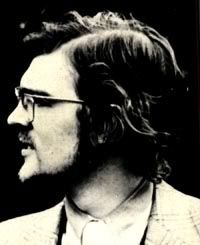
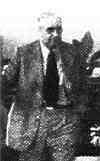
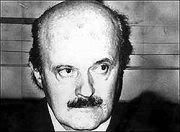
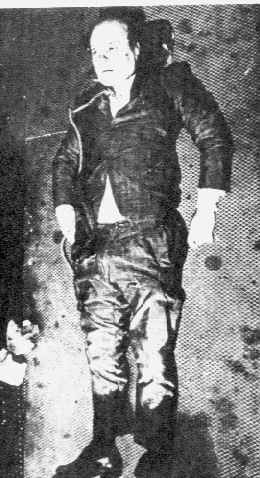
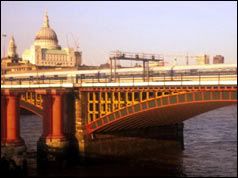
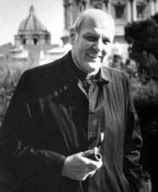

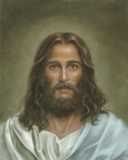
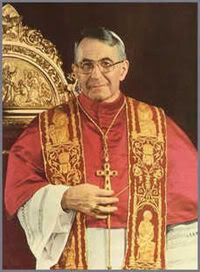
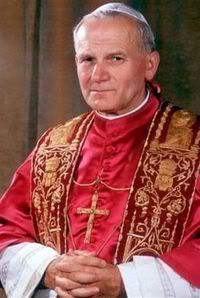
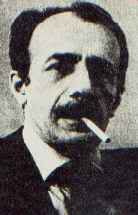
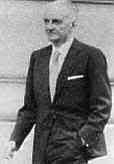
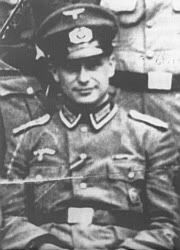
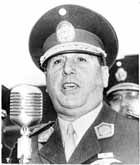
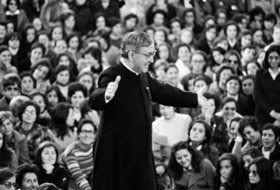

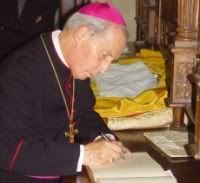
No comments:
Post a Comment